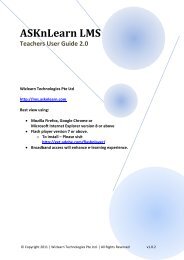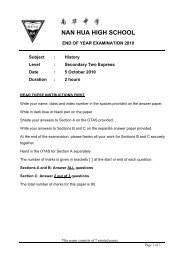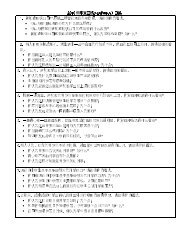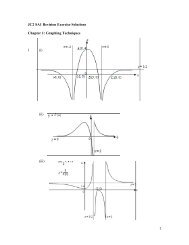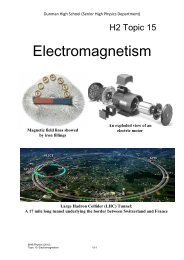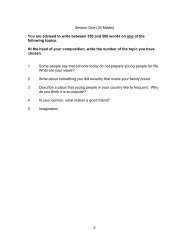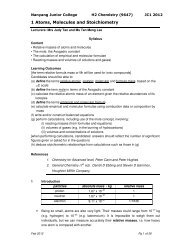Suggested Answers of BT2 Revision Package - ASKnLearn
Suggested Answers of BT2 Revision Package - ASKnLearn
Suggested Answers of BT2 Revision Package - ASKnLearn
- No tags were found...
You also want an ePaper? Increase the reach of your titles
YUMPU automatically turns print PDFs into web optimized ePapers that Google loves.
(d)Consider whether the evidence in Table 2 would lead you tobelieve that China has a healthy economy in 2008.A healthy economy is an economy with high growth, lowunemployment, stable prices, balanced BOP and stable exchange rate.There is high actual growth as can be seen from the GDP and CPI dataand there is also high level <strong>of</strong> investment, indicating that firms ingeneral have a positive outlook for the Chinese economy. Potentialgrowth should be high as LRAS would be increased significantly due tothe high level <strong>of</strong> investment.Inflation is also very low, indicating that in spite <strong>of</strong> the high growthChina’s economy is actually not over-heating. The stability in prices canencourage investments, improving the health <strong>of</strong> the economy.Registered unemployment rate in urban areas is also relatively low andstable, an indication <strong>of</strong> a healthy economy.There is also persistent and increasing surplus in the BOT. Thisindicates strong and increasing export competitiveness <strong>of</strong> industries.China’s industries are gaining CA and this would further encourageFDI, promoting economic growth.Exchange rate has strengthened compared with the previous year. Asthe appreciation is due to excess demand for yuan due to the strongexport performance <strong>of</strong> China, the economy is healthy.[8]But there are inadequacies in the data provided in Table 2 for acomplete assessment <strong>of</strong> the economy. First, GDP data does not informus about the distribution <strong>of</strong> income. Income distribution can be unevenand inequitable with urban cities getting a disproportionate large share<strong>of</strong> national income. Data should include the Gini coefficient for thewhole <strong>of</strong> China. Furthermore, we are not given any data on the size <strong>of</strong>the population. A better indicator <strong>of</strong> a healthy economy is GDP percapita. Second, we do not have the overall unemployment rate inChina. This can hide a high unemployment rate in the rural areas aspeople that are unemployed could return to their home in the ruralareas. Third, we are also not provided with BOP figures. Performancein the financial and capital account is not known.Hence data in Table 2 clearly indicates that China has a strong andhealthy economy in 2008 and she is not suffering from the US subprimecrisis. While ideally we need more complete information such as Ginicoefficient, GDP per capita and BOP for a more complete assessment,the given data is sufficient for us to conclude that China’s economy ishealthy. This is because China being a socialist country has programs



